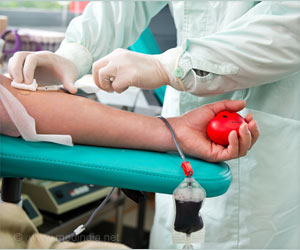It may be convenient to monitor chronic conditions like diabetes with the help of sensors placed under the skin, but this method may spark fibroblast tissue capsule around the sensor.
It may be convenient to monitor chronic conditions like diabetes with the help of sensors placed under the skin, but this method may spark fibroblast tissue capsule around the sensor. But now, researchers have developed a self-cleaning surface that shakes off the body's defence response enabling the biosensors to work for longer inside the human body.
Implanting sensors beneath the skin can give a continuous read-out of they condition of the patients. But for proper functioning the sensor surface must remain clean for a prolonged period. However, the implanted sensor is taken as a foreign object by the body and it mounts an immune response.And in case, the immune system can't destroy the object, specialist cells called fibroblasts move in and begin to form a tissue capsule around the sensor, that spoils its sensitivity.
However, Rebecca Gant at Texas A and M University in College Station, US, said that it is possible to fight this fibrous tissue growth by coating the sensor with a self-cleaning membrane she has developed with colleagues. This membrane is a hydrogel with properties that depend on its temperature.
While below 34 degree C, the membrane is hydrophilic and so absorbs water and swells, but above 34 degree C it turns hydrophobic and releases water and starts shrinking. According to the researchers, this change, along with the swelling and shrinking, would shake off any cells attached to the surface.
In order to test their claim, they placed a hydrogel sample in a mouse fibroblast cell culture, and kept the cells overnight at 37 degree C, the average temperature of the human body. They then found that the fibroblasts had begun to encapsulate the hydrogel by the morning. After this, the temperature was lowered to 25 degree C and the hydrogel was allowed to absorb water and swell, and the temperature was further lowered to 37 degree C. They found that the number of attached cells dropped by around 80 percent after this procedure.
Later, they extended the low level of attached cells for four hours by repeating the temperature change procedure every 60 minutes. This, they said was enough to keep a sensor coated with the gel largely free from fibrous overgrowth.
Advertisement
To produce the desired changes to the gel within the body, "[the membrane-coated sensors] would be placed just under the surface of the skin and controlled via an external device housing a heating/cooling element," New Scientist quoted Gant, as saying.
Advertisement
Source-ANI
SAV/N











